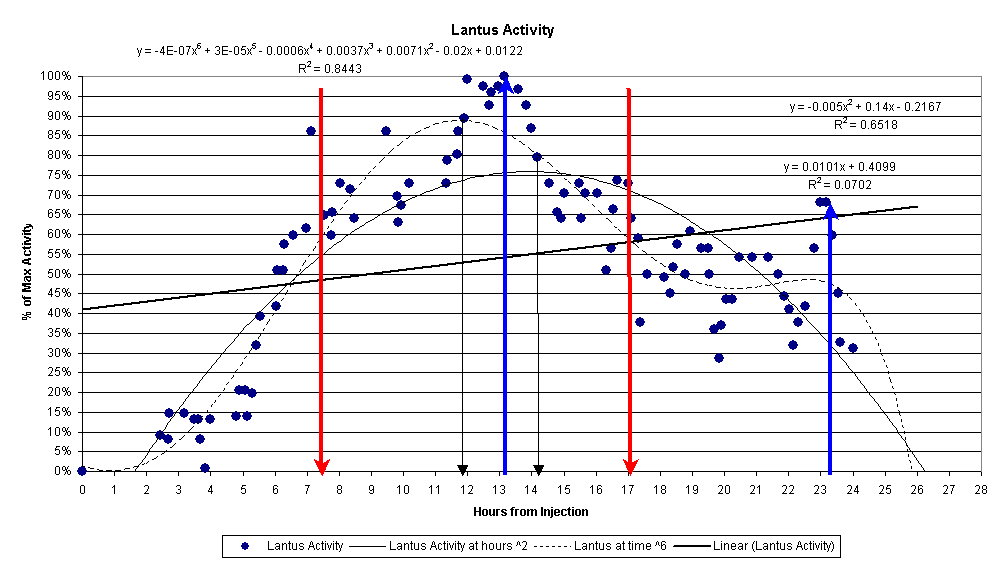|
The most popular search keys finding our website, aside from diabetes, diabetic, and insulin, are Lantus, Glargine, and Aventis or Hoechst (ok, I am excluding Lilly and Novo and Humulin, Novolin, Humalog and Novolog). However, I thought it might be helpful for many of you to see how they claim this "basal" Insulin acts. It doesn't look basal to me, and we'd love to have the "gold standard" Beef UL back, but in our continuing effort to help our fellow diabetics, I am hoping that you may find this activity curve of use for you and your MD to build a regimen, if you are forced to use it. HOE901 is also called Glargine and Lantus, and Hoechst is now called Aventis. We hope that this activity curve will help you and your medical team use it. Basal insulin should be no more than 40% of your daily total insulin dose. Your basal insulin should not reduce your BG, but simply hold it constant as your liver tries to increase it. The "push" on Lantus may be a problem for some of us, and I encourage you to read the related articles here. |
 |
|
Clearly this is not a true basal insulin but it is likely better than Human NPH or even Human UL for almost all diabetics. Lantus is too new for much to have been published about it, we can only note that it did cause cancer in the lab animals in the clinical trials <click here> to read their publication of this fact Like Humalog and Novolog (Novorapid) or Lyspro and Insulin Aspart, it appears that it may have IGF-1 (Insulin-like Growth Factor 1) issues and we've received some negative reports and few positives regarding it, but it may be the only choice you have given that the human insulins don't work for so many of us. One of our correspondents reports problems expressed by her Diabetologist <click here> to read. We need your help in evaluating this new drug, so please Email me at David Groves and give us your comments, or better yet, participate in our Forum <click here> and share your experiences with the rest of our motley crew. Hopefully this activity curve will help you to deal with using Lantus and controlling your blood sugars. Note that Lantus is not an insulin but an insulin-like hormone that does not occur in nature, it has 53 amino acids, instead of the usual 51. <click here> to see how it differs from insulins of all of the vertebrate animals known to science. Perhaps a more realistic way to look at Lantus, based on their data is to take the highest point of "activity" as 100% and observe its secondary peak:
Clearly this is NOT a true basal insulin, regardless of how much "better" than Human NPH it may be.
|
